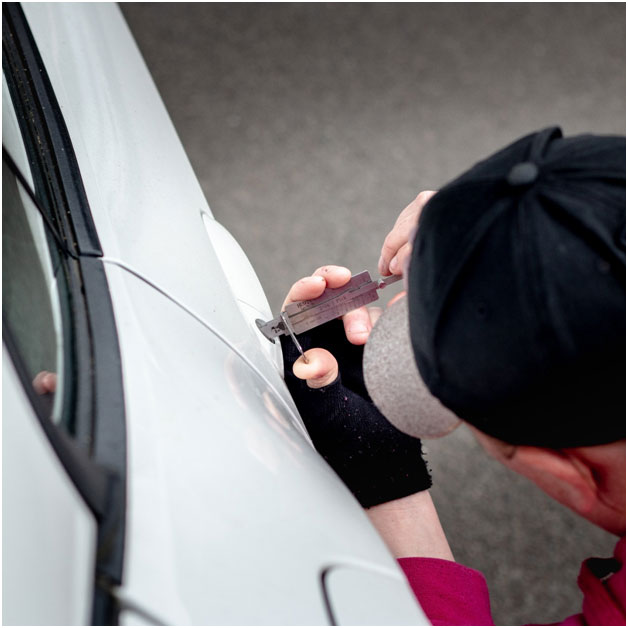
By: We've Got The KeyviaPexels
Famous Classic Car Heists
The Most Daring and Notorious Crimes in Automotive History
Car thefts have long captured the public’s attention and made for compelling headlines. These real-life stories often have it all: mystery, intrigue, audacity, and even a tinge of romance.
They offer a voyeuristic look into the world of organized crime and establish the lengths to which individuals are willing to go to acquire these treasured cars.
Modern-day car thefts may dominate the news cycle, but the realm of classic cars holds its own share of captivating heists.
Perhaps it is the allure surrounding classic cars that makes them enticing targets for thieves. Or it might be the ease with which some models can be boosted.
In this article, we will dive into the dark underworld of famous classic car heists, exploring the motivations behind this illegal activity. We will also offer insights into both the risks and rewards that such nefarious deeds entail.
An examination of insurance’s role in car theft cases and preventative measures will help keep classic car owners from turning into victims themselves.
Three notable case studies will help us to gain some insights into classic car thefts of the past and the lessons that can be learned.
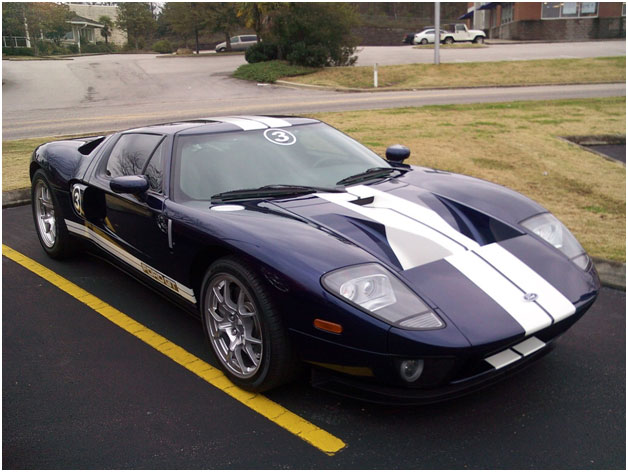
Image by davidmcmath0 from Pixabay
Understanding the Allure of Classic Cars
Classic cars hold immense value to their owners. Many motor enthusiasts gaze upon their classic cars with a twinkle in their eyes. The allure of these magnificent machines falls into a few categories. Let’s examine them briefly.
1. Nostalgia
Classic cars are time machines that transport a person to the past. This may be through a personal attachment to one’s youth, remembering their parents driving a particular vintage car. Or it may be a treasured memory of seeing a prized vehicle on the big screen.
Car enthusiasts often go looking for personally significant car models and spend time, effort, and money to restore these aging links to a bygone era.
2. Craftsmanship
It’s often said, “They don’t make cars like they used to.” Modern vehicles are mass-produced and often seem like carbon copies of competing manufacturers.
On the other hand, classic vehicles are often viewed as iconic and individualized works of art.The sheer craftsmanship of quality cars has led to decades-long love affairs with these stately beasts.
You can also add the simplicity of classic cars as a positive point. Tinkerers who want to build a project car delight in the basic mechanics of a classic car that are free of expensive and often untouchable electronic components found in modern vehicles.
3. Value
A third reason for the popularity of classic cars is their value. Most modern vehicles depreciate over time – often as soon as they are driven off the car lot.
Well-maintained classic cars may tend to go up in value because of their individuality and increasing rarity. This means that a classic car can also be an investment for the future!
The Problem
For the three reasons above, classic cars are often prized by collectors and motorheads alike. Unfortunately, for some of the same reasons, they are also valued by car thieves.
Because vintage cars often have simpler components and retain their value, they can be quite an alluring target for shifty-eyed ne’er-do-wells.
While some protective measures can be taken to secure classic cars from greedy hands, these will always fall short of one hundred percent effectiveness.
The Solution
Some methods of protection may include state-of-the-art aftermarket security systems or removing key components when the vehicle is placed in storage for a length of time. However, the truth is that persistent robbers can find workarounds for any of these systems.
This fact makes insurance a key protective measure. Innovative policies like stated value insurance may be just what a car owner needs to balance protection and affordability.
We will discuss more on this subject, but, first, let’s examine things from the perspective of the thief and then observe some real-life events that highlight the importance of the right protection and insurance policy for your classic car.
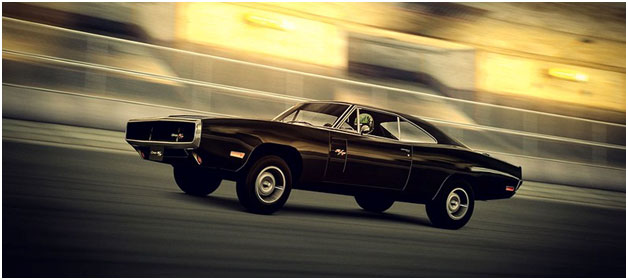
By TransformersMan via flickr
The World of Car Heists
Car thefts have been an ongoing issue since the invention of the automobile. In the early days, car thefts were driven by opportunistic criminals looking for easy targets.
The advance of technology led to better anti-theft systems, forcing thieves to refine their methods. Classic cars became a more attractive option because of their high value and potential for huge profits on the black market.
This highlights one of the largest rewards of classic car theft. A successful heist can fetch significant sums of money. If thieves are willing to perform the jobs, there will be unscrupulous – or at least unsuspecting - collectors willing to shell out premium amounts for rare models.
Another motivation may include the notoriety that results from high-profile, newsworthy heists.
But the illicit theft and sale of classic cars don’t come without risks. Enhanced law enforcement scrutiny may give criminals pause.
The changing market can affect a thief’s ability to unload a lifted vehicle. Meticulous research can be conducted on a car’s provenance, proving its path of ownership over the decades.
As more and more reputable collectors and auction houses require this proof, it becomes less likely that a stolen car can be purchased unknowingly.
Of course, another risk is damage to the priceless vehicle itself. There is the potential for damage or destruction of valuable vehicles during the acquisition phase which could ruin any promise of profit.
Notable Classic Car Heists
Consider three real-life scenarios of classic car heists from the past. Afterward, we will examine the role of insurance and the takeaway lessons we learn from these historical events.

By Andrew Bone via flickr
1975, The Theft of the Bugatti Type 57S Atalante
The Bugatti Type 57S Atalante is a rare and valuable car. Only 17 cars of the product line were produced which made this model one of the most prized possessions for car enthusiasts. It is valued at over $4 million.
It’s no surprise that the “theft” of one of these vehicles from a collector’s estategenerated international attention and captured people’s imagination.
The car remained missing for four decades before being discovered in the barn of the reclusive collector, D. Harold Carr of Gosford, England after his death.
It’s believed that the car was never actually stolen, but rather, hidden for unknown reasons by the secretive owner.
When rediscovered, the vehicle had an amazing 26,000 miles on the odometer. However, it would require nearly $700,000 to bring it back to like-new condition.
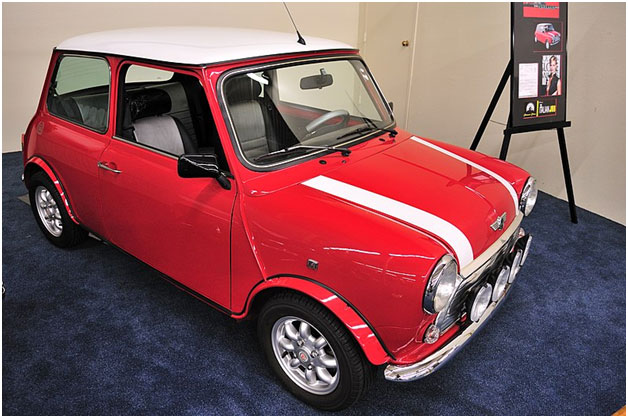
flickr, CC BY 2.0, via Wikimedia Commons
2001, The Disappearance of the 1967 Austin Mini Cooper S
The 1967 Austin Mini Cooper S was made famous by the classic film “The Italian Job”. The unique two-door, four-seat car broke the stranglehold of oversized muscle cars and got people excited about smaller vehicles.
Valued at around $135,000, one of the distinctive racing cars was stolen in 2001 from the owner’s home in Los Angeles, California.
The stolen Mini Cooper S became an icon in the realm of classic car heists and has unfortunately never been recovered.
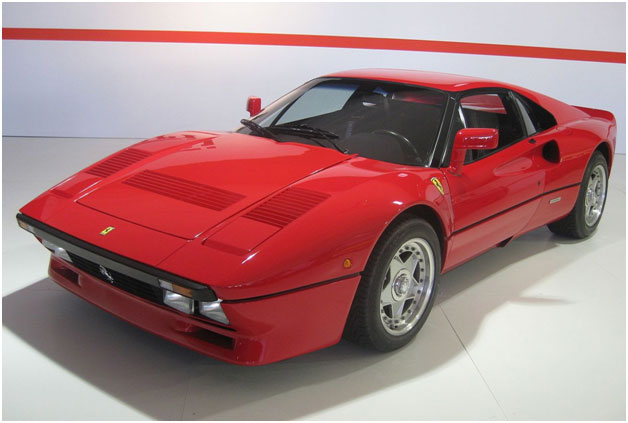
By GTHO - Own work, CC BY-SA 4.0,
2018, The Robbery of the Ferrari 288 GTO
A vintage car dealer in Germany was contacted by a prospective customer and expressed interest in buying a 1985 Ferrari 288 GTO.
The sleek lines of the Ferrari copy the lookalike Ferrari 308 GTS that was made famous in the 1980s on the television shows “Magnum P.I.” and “Miami Vice” and the movies “Golden Eye” and “Ferris Bueller’s Day Off.”
During the test drive, the seller got out of the vehicle to swap spots with the potential buyer. Without warning, the man sped off in the pristine red racing car, leaving the shocked seller on the side of the road.
The Ferrari 288 GTO is a limited edition variant of a production Ferrari, the 308 GTB. Only 272 of the vehicles were constructed between 1984 and 1987 to be used in circuit racing competitions.
Being one of the most sought-after Ferraris from the 80s put the price tag of the classic car at nearly $2.2 million.
The vehicle, once belonging to former Formula 1 driver Eddie Irvine, was eventually recovered by German authorities. It was found hidden in a garage in Grevenbroich, 18 miles southwest of Düsseldorf.
The suspect remains at large, never having been identified. This isdespite the effort and forethought displayed by the seller before the start of the ill-fated test drive who even photographed the suspect.
The Role of Insurance in Classic Car Theft Cases
Classic car thefts can happen due to a variety of factors. The high value and desirability in the collector community often make them prime targets.
There is also a demand on the black market for classic car parts. This means that thieves can easily part out a pilfered vehicle and still make a tidy sum while reducing the risk of being caught.
Insurance helps to safeguard against a devasting financial loss for the owner in the case of a stolen vintage vehicle.
Classic Cars and Traditional Car Insurance Standard car insurance policies typically cover the actual cash value (ACV) of a vehicle, which accounts for depreciation over time and is based on the fair market value of similar vehicles. However, this approach isn't suitable for classic cars, which often increase in value and hold a higher worth due to their rarity, condition, or historical significance. Thus, owners of classic cars often need a different type of insurance coverage.
Stated Value and Agreed Value Insurance: An Overview This is where stated value and agreed value insurance come into play. These policies are designed specifically for classic cars. They allow owners to determine the vehicle's value, often through an appraisal or documentation, and insure the car for that specified amount. In the event of theft or a total loss, the payout is based on this established value, rather than the actual cash value.
Real-World Example: 1967 Ford Mustang GT Let's consider a practical example. Suppose a car enthusiast owns a meticulously restored 1967 Ford Mustang GT, valued at $100,000. A standard insurance policy would only cover the actual cash value, which could be significantly less than $100,000. Should the car be stolen, the owner would suffer a substantial financial loss. However, with stated value or agreed value insurance, the owner would be reimbursed for the agreed-upon value of $100,000, which enables them to replace their lost investment.
Another Scenario: 1969 Dodge Charger 500 In another scenario, an individual inherits a 1969 Dodge Charger 500 from his father, valued at $250,000. The cost of standard insurance premiums for a car of this value could be prohibitive. In such cases, the owner could opt for a stated value policy lower than the car's actual value. While this would mean that the payout in case of theft or total loss would be less than the car's true value, it still offers a level of protection and results in more affordable insurance premiums.
Summing It Up
The distinction between stated value insurance and other forms of auto insurance lies in the scope of coverage and the valuation process. Standard policies determine coverage based on factors such as depreciation, mileage, and market value. Conversely, stated value insurance allows classic car owners to specify their vehicle's value at the time of purchasing insurance. This customized approach more effectively accommodates the unique attributes and considerations of classic car ownership.
Lessons Learned from Famous Classic Car Heists
When examining common elements in classic car thefts, we can identify important lessons for the classic car community.
Enhanced Security Measured
Classic cars are often targeted due to their vulnerabilities, such as inadequate security systems, lack of tracking devices, and outdated locks. Classic car owners can learn from these thefts by implementing robust security measures to protect their vehicles.
Installing alarm systems, GPS trackers, steering wheel locks, and the use of secure storage facilities are just a few examples of preventative measures that can significantly reduce the risk of theft.
Register and Document
Classic car owners should properly register and document their classic cars with relevant authorities. Maintain extensive records, including photographs, serial numbers, and unique characteristics.
Historical documents that prove the history of a vehicle may help to recover the vehicle if it is lost or stolen and add to its overall value.
Become a Part of the Community
Car enthusiasts and owners can participate in local car clubs and organizations as a means to stay informed about recent thefts and provide support to community efforts to combat classic car thefts.
Market and Community Effect
The impact of classic car thefts on the classic car community and market is substantial. Not only does it result in emotional distress and financial loss for individual owners, but it also erodes the sense of security within the community.
These thefts can also have a broader effect on the classic car market, leading to increased insurance premiums, stricter appraisal processes, and a decline in overall market confidence.
Additionally, the loss of unique and rare vehicles diminishes the cultural and historical heritage preserved by the classic car community.
Conclusion
In conclusion, classic car heists engage our imaginations with their heady mix of glamour, high stakes, and the allure of vintage automobiles.
While stories of theft and mystery may be entertaining, they also remind us of the importance of safeguarding these links to the past.
Insurance plays a vital role in protecting classic car owners against complete financial loss due to theft. Stated value insurance offers a specialized solution that considers the unique value of classic cars, ensuring owners are adequately protected.
By implementing comprehensive security measures and pairing them with the right insurance coverage, classic car enthusiasts can mitigate the risk of theft and protect their beloved vehicles.
Ultimately, the collective efforts of insurance providers, owners, and the wider community are crucial in preserving the heritage and value of classic cars for generations to come.
References
https://www.autodeal.com.ph/articles/car-features/5-timeless-reasons-why-people-love-classic-cars
https://www.lelandwest.com/stated-value-vs-agreed-value-classic-car-insurance.cfm
http://vintagecarresearch.com/about-provenance
https://www.cnn.com/style/article/classic-ferrari-stolen-on-test-drive-intl-scli-grm/index.html
https://www.dw.com/en/stolen-2-million-ferrari-secured-by-german-police/a-48738765
https://www.wired.com/2009/02/a-1937-barn-fin/
